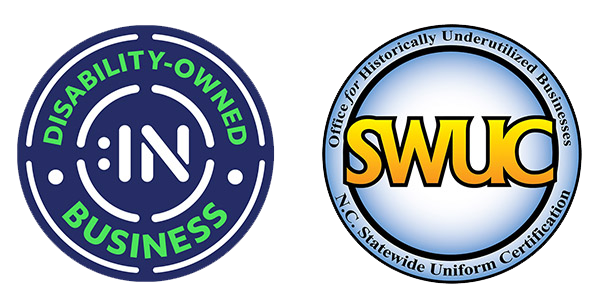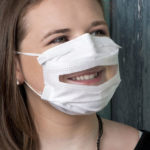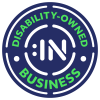Quick Guide: Communicating with Elderly Patients
November 9, 2022 2023-02-23 13:22Quick Guide: Communicating with Elderly Patients

Quick Guide: Communicating with Elderly Patients
Communication is everything in healthcare, especially when it comes to caring for the elderly. Many older adults in the United States who receive care from healthcare workers have Alzheimer’s and other age-related issues. According to numbers from the Alzheimer’s Association,
“An estimated 6.5 million Americans age 65 and older are living with Alzheimer’s in 2022. Seventy-three percent are age 75 or older.”
In fact, about 1 in 9 aged 65 and older in the United States have Alzheimer’s. Because many of the Healthcare facilities using Safe’N’Clear masks care for people with Alzheimer’s and because it is National Alzheimer’s Disease Awareness Month, Safe’N’Clear wanted to create a guide on communication with the elderly with this condition. Of course, all of these insights also apply to communication with care for other elderly patients as well. You can read all of our tips below!
1. Avoid Interrupting or Trying to Rush
No one likes to feel like they are being rushed through a conversation, and no one likes being interrupted. That is why you need to ensure all communication is taken at a reasonable pace to ensure understanding.
Especially for loved ones dealing with Alzheimer’s, being able to take the time to communicate with empathy and care is crucial. According to the National Institute on Aging, those with Alzheimer’s might have the following issues with communication:
- Finding the right word or losing their train of thought when speaking
- Understanding what words specific terms mean
- Paying attention during long conversations
- Remembering all the steps in everyday activities, like cooking a meal, paying bills, or getting dressed
- Blocking out background noises from the radio, TV, or conversations
- Frustration if communication is not working
- Being very sensitive to touch and to the tone and loudness of voices
If the person also has hearing loss or deafness, rushing through communication can lead to a lack of understanding and even more frustration. That is why you must take the time to communicate with elderly patients and listen. Have a full conversation with them and let it take as long as it needs to take. Listen to everything they say and ensure everything you have to say can be understood by the patient. This focus on true communication will have long-term positive impacts on their health and the level of care you can provide.
2. Build Rapport and Establish a Connection
Beyond having conversations where everyone can speak and be understood, you also need to be able to develop a connection with your patients. Especially where masks are required, Safe’N’Clear’s The Communicator™ has a clear window so that you can communicate clearly with those that are deaf or hard of hearing and build a deeper connection. When patients see more of your face, they can get a sense of what you are talking about and engage even more.
In addition, by taking steps to make eye contact and be friendly with patients in your care, patients are more likely to share what they are thinking and what they are experiencing with you. In fact, according to a study published in the National Library of Medicine on empathy in healthcare,
“Empathy is one of the fundamental tools of the therapeutic relationship between the carers and their patients and it has been proven that its contribution is vital to better health outcomes. As it allows the health care providers to detect and recognize the users’ experiences, worries, and perspectives, it strengthens the development and improvement of the therapeutic relationship between the two parts. It is widely acknowledged that the health professional’s empathetic ability leads to better therapeutic results.”
Communicating with empathy and care can only facilitate a better healthcare process for the patients in your care. With a stronger connection, you can have better health outcomes and make sure your elderly patients get what they need.
3. Ensure They Understand Health Information
Beyond making that connection, it is crucial that you make sure your patients understand the healthcare information you are telling them. This can be difficult if they have Alzheimer’s because of lapses in memory and difficulty focusing. What is important is that you take the time to explain to them one on one what their current results mean and what the care plan entails.
If patients are also deaf or have hearing loss, they should also be able to see your mouth and body language while speaking, so if they lip read, they can have the best possible understanding. Safe’N’Clear is particularly dedicated to changing the face of healthcare with this accessibility because there are better healthcare outcomes when everyone is part of the conversation.
4. Use ADA-Accessible Equipment and Practices
Finally, as many elderly patients have disabilities, you must ensure your communication is as accessible as possible. According to the ADA Knowledge Translation Center,
“More than 30 percent of Americans over age 65 have some kind of disability, and over 50 percent of those over age 75. These may range from difficulties seeing and hearing to walking and thinking. Under the ADA, it isn’t the cause of the disability that matters, but what it means in everyday life.”
With more elderly patients with hearing loss and other disabilities and diseases like Alzheimer’s, you need to prioritize accessibility in your care. Because many elderly are particularly susceptible to COVID-19, many healthcare centers require surgical masks. However, many masks do not have a clear communication window like The Communicator™. Because the Safe’N’Clear mask has a clear window, patients and doctors can lip-read and communicate effectively. Including masks with a clear window like The Communicator(™), makes your healthcare facility more accessible and allows you to provide better care. You should also consider different ways to improve accessibility at your hospital to help improve care for your patients. From PPE to the structure of your facility, making it more accessible will help you provide better care for the elderly.
Need Safe’N’Clear Mask For Your Healthcare Facility?
Of course, these are just a few suggestions for improving communication for elderly patients. If you ensure that your workplace has all the protective equipment needed for clear communication and compassionate care in the coming year, Safe‘N’Clear hopes you will consider The Communicator™ for your masking needs.
Safe‘N’Clear markets The Communicator™ surgical face mask with a clear window, which is the first FDA-approved medical face mask. The mask is 100% sourced and made in the USA and is ADA-effective, allowing healthcare facilities to serve patients with accessible, transparent, and clear communication. The Communicator™ is also approved by Health Canada and Europe’s CE mark; The Communicator™ is definitely the best medical-grade mask quality-wise and communication-wise. If you are ready to get started, shop The Communicator™ mask here. You can also learn all about Safe’N’Clear here.
Purchase Online
Featured Deaf Leader
Recent Articles













